 by our College Data Analytics Team
by our College Data Analytics TeamAlabama State total enrollment is approximately 4,072 students. 3,289 are undergraduates and 318 are graduate students.
Male/Female Breakdown of Undergraduates
The full-time Alabama State undergraduate population is made up of 64% women, and 36% men.
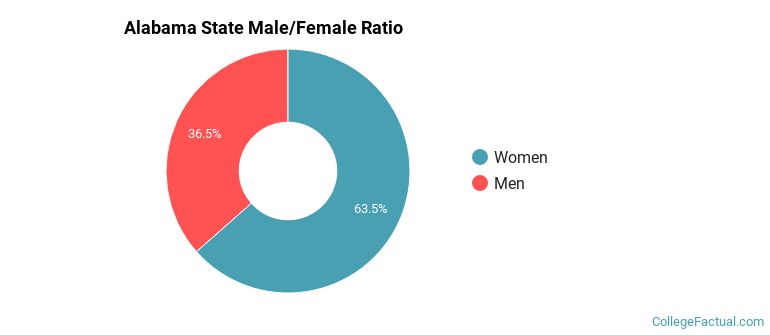
For the gender breakdown for all students, go here.
Alabama State Racial/Ethnic Breakdown of Undergraduates
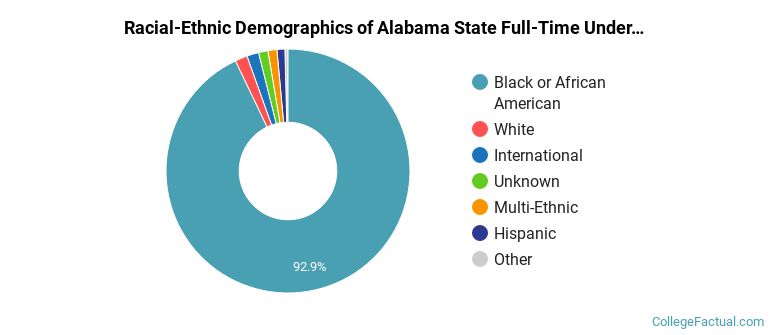
| Race/Ethnicity | Number |
|---|---|
| Black or African American | 3,036 |
| International | 56 |
| White | 54 |
| Hispanic | 45 |
| Multi-Ethnic | 42 |
| Unknown | 39 |
| Asian | 7 |
| Native Hawaiian or Pacific Islander | 5 |
See racial/ethnic breakdown for all students.
Male/Female Breakdown of Graduate Students
About 73% of full-time grad students are women, and 27% men.
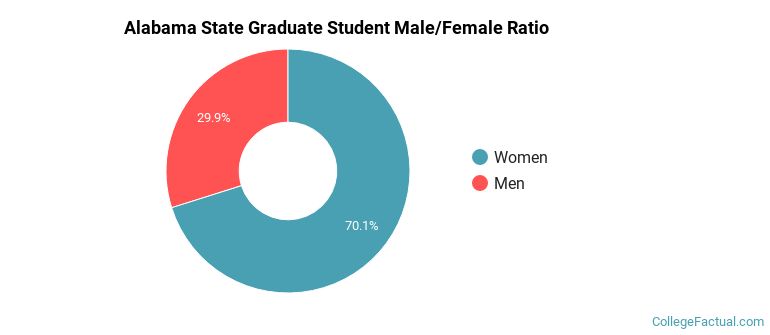
For the gender breakdown for all students, go here.
Alabama State Racial-Ethnic Breakdown of Graduate Students
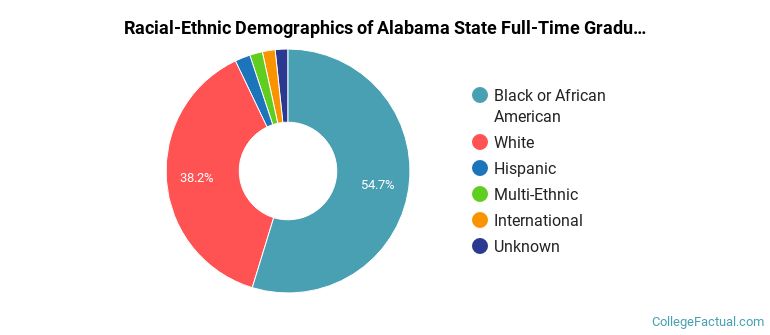
| Race/Ethnicity | Number |
|---|---|
| Black or African American | 193 |
| White | 111 |
| Multi-Ethnic | 5 |
| Hispanic | 4 |
| Asian | 1 |
| International | 1 |
| Unknown | 1 |
| Native Hawaiian or Pacific Islander | 0 |
See racial/ethnic breakdown for all students.
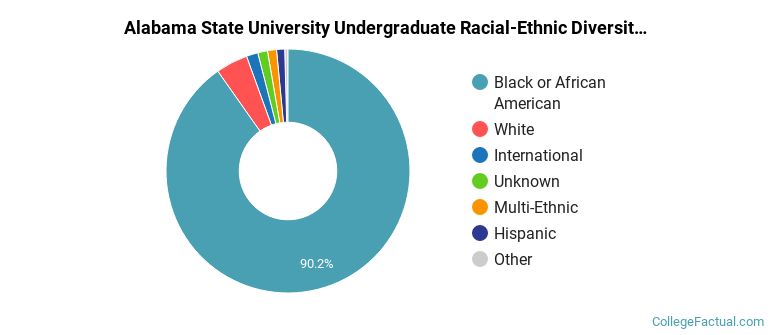
| Race/Ethnicity | Number |
|---|---|
| Black or African American | 3,668 |
| White | 173 |
| International | 60 |
| Hispanic | 52 |
| Multi-Ethnic | 49 |
| Unknown | 47 |
| Asian | 9 |
| Native Hawaiian or Pacific Islander | 6 |
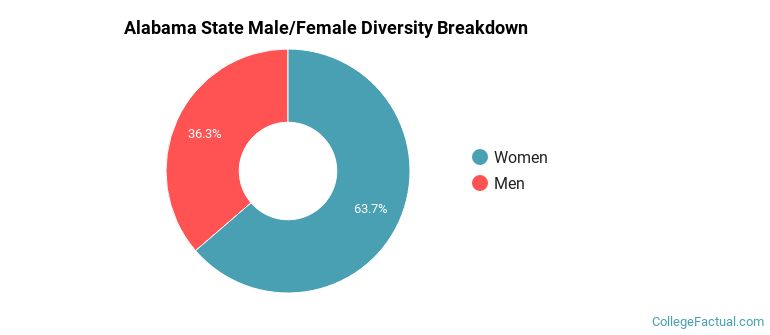
There are approximately 2,637 female students and 1,435 male students at Alabama State.
Alabama State ranks 508 out of 2,183 when it comes to geographic diversity.
42.33% of Alabama State students come from out of state, and 1.2% come from out of the country.
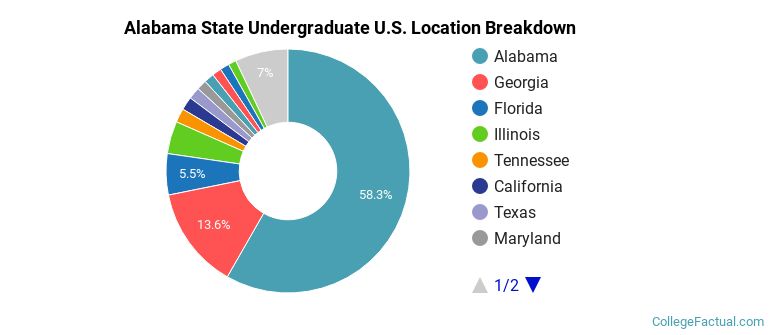
The undergraduate student body is split among 30 states (may include Washington D.C.). Click on the map for more detail.
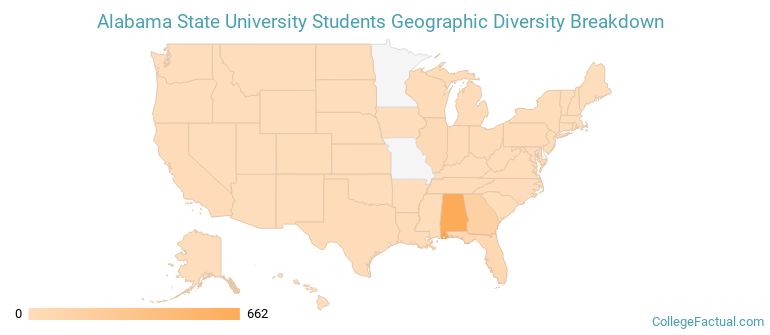
| State | Amount |
|---|---|
| Alabama | 662 |
| Georgia | 154 |
| Florida | 62 |
| Illinois | 49 |
| Tennessee | 21 |
Students from 35 countries are represented at this school, with the majority of the international students coming from Nigeria, Canada, and Jamaica.
Learn more about international students at Alabama State.
A traditional college student is defined as being between the ages of 18-21. At Alabama State, 59.92% of students fall into that category, compared to the national average of 60%.
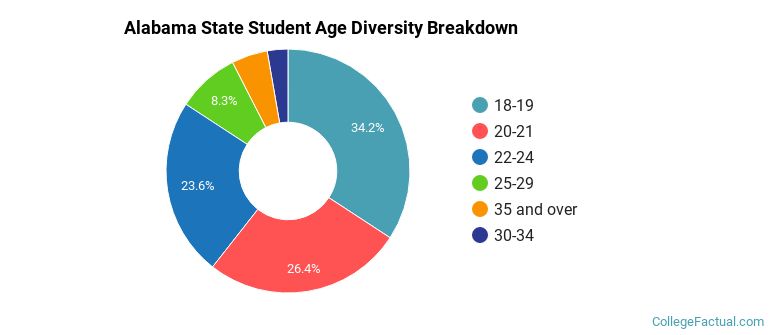
| Student Age Group | Amount |
|---|---|
| 18-19 | 1,610 |
| 20-21 | 1,242 |
| 22-24 | 1,111 |
| 25-29 | 389 |
| 35 and over | 225 |
| 30-34 | 129 |
| Under 18 | 0 |
Footnotes
*The racial-ethnic minorities count is calculated by taking the total number of students and subtracting white students, international students, and students whose race/ethnicity was unknown. This number is then divided by the total number of students at the school to obtain the racial-ethnic minorities percentage.
References
Department of Homeland Security Citizenship and Immigration Services
Image Credit: By Spyder_Monkey under License
Find out how College Factual created their Diversity Rankings.